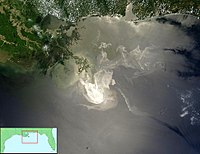
A new approach to testing potential leaching toxicity of fouling release coatings (FRCs).
Sign Up to like & getrecommendations! Published in 2018 at "Marine environmental research"
DOI: 10.1016/j.marenvres.2018.09.024
Abstract: Fouling release coatings (FRCs) are today the main environment-friendly alternative to traditional self-polishing coatings, that continuously release biocides and/or heavy metals into water. FRCs are available on the market as environmentally friendly AF paints and… read more here.
Keywords: coatings frcs; leaching products; fouling release; leaching ... See more keywords

Diffusion of surface-active amphiphiles in silicone-based fouling-release coatings
Sign Up to like & getrecommendations! Published in 2017 at "Progress in Organic Coatings"
DOI: 10.1016/j.porgcoat.2017.02.014
Abstract: Abstract Amphiphiles (i.e. amphiphilic molecules such as surfactants, block copolymers and similar compounds) are used in small amounts to modify the surface properties of polymeric materials. In silicone fouling-release coatings, PEG-based amphiphiles are added to… read more here.
Keywords: diffusion; biofouling resistance; surface; fouling release ... See more keywords

Field study of the long-term release of block copolymers from fouling-release coatings
Sign Up to like & getrecommendations! Published in 2017 at "Progress in Organic Coatings"
DOI: 10.1016/j.porgcoat.2017.07.001
Abstract: Abstract The addition of block copolymers (i.e. oils) is a common technique to enhance the biofouling-resistance properties of poly(dimethylsiloxane) (PDMS)-based fouling-release coatings. These copolymers diffuse from the bulk to the surface of the coating, thus… read more here.
Keywords: term; long term; fouling release; block copolymers ... See more keywords

Grooming of fouling-release coatings to control marine fouling and determining how grooming affects the surface
Sign Up to like & getrecommendations! Published in 2022 at "Biofouling"
DOI: 10.1080/08927014.2022.2084389
Abstract: Abstract Grooming may be an effective technique to control marine biofouling without damaging the coating or discharging active ingredients into the environment. This study assessed the grooming performance of three experimental biocide-free siloxane polyurethane (SiPU)… read more here.
Keywords: grooming; control marine; fouling release; release coatings ... See more keywords

Fouling Release Coatings Based on Acrylate–MQ Silicone Copolymers Incorporated with Non-Reactive Phenylmethylsilicone Oil
Sign Up to like & getrecommendations! Published in 2021 at "Polymers"
DOI: 10.3390/polym13183156
Abstract: Copolymers containing MQ silicone and acrylate were synthesized by controlling the additive amount of compositions. Subsequently, fouling release coatings based on the copolymer with the incorporation of non-reactive phenylmethylsilicone oil were prepared. The surface properties… read more here.
Keywords: silicone; phenylmethylsilicone oil; fouling release; release coatings ... See more keywords

Preparation and Properties of Fluorosilicone Fouling-Release Coatings
Sign Up to like & getrecommendations! Published in 2022 at "Polymers"
DOI: 10.3390/polym14183804
Abstract: To improve the antifouling performance of silicone fouling-release coatings, some fluorosilicone and silicone fouling-release coatings were prepared and cured at room temperature with hydroxyl-terminated fluoropolysiloxane (FPS) or hydroxy-terminated polydimethylsiloxane (PDMS) as a film-forming resin, tetraethyl… read more here.
Keywords: fps coatings; fluorosilicone fouling; improve antifouling; fouling release ... See more keywords